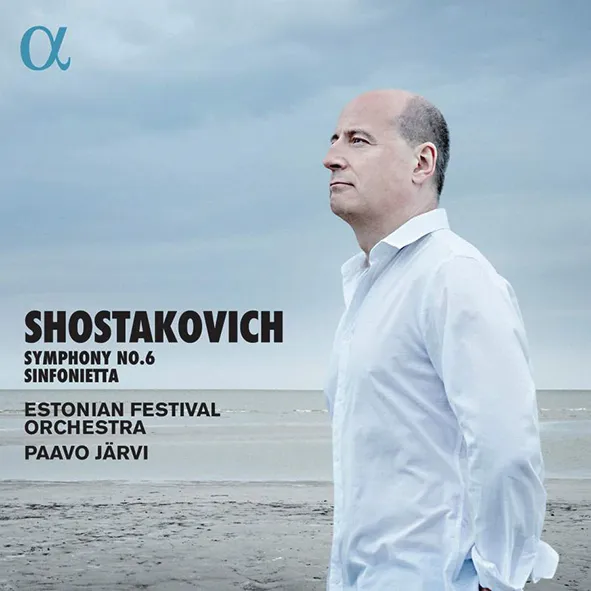
Shostakovich Symphony No. 6; Sinfonietta (Quartet No. 8 – arr. Stasevich) Estonian Festival Orchestra/Paavo Järvi Alpha Classics ALPHA 389
I always assumed that Shostakovich was being disingenuous when describing his Sixth Symphony as a work imbued with the character of ‘spring, joy and hope’. None of its three movements, from the funereal opening Largo to the grotesque circus music of the Finale, appear even remotely to qualify for such a description. Yet Paavo Järvi comes much closer than other conductors to encapsulating the lightness of mood and texture which Shostakovich apparently desired in this work. Even the most ominous darkly subterranean sounds of the first movement are presented here with an unexpected degree of delicacy, and the ruminative and hypnotically played flute cadenza has a sensuousness not normally associated with Shostakovich. Much praise must go to the Estonian Festival Orchestra for their subtle and intimate projection of such passages. Equally impressive is the nimble and precise string articulation achieved in the Rossini-like opening of the Finale.
To assume however that Järvi glosses over the more forbidding subtext of the Symphony would be misleading. There’s lots of weight in the big climaxes of the Largo, and the orchestra certainly unleashes a ferocious salvo of sound in the raucous middle section of the scherzo as well as in the hysterical high jinks of the Finale’s coda.
If anything, Abram Stasevich’s imaginative arrangement of the Eighth Quartet for string orchestra and timpani is even more engaging, especially in such a brilliant and emotionally compelling performance. There’s little doubt, too, that the introduction of timpani, whether sustaining soft sinister rolls in the first and fifth movements or punctuating the violent jabbing chords of the second and fourth movements, greatly enhances the work’s sombre character.
Erik Levi